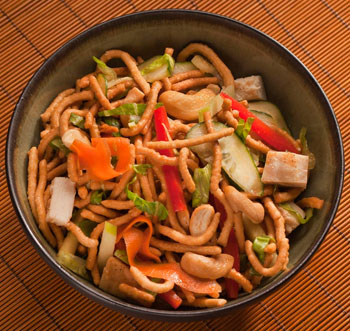“Better Butter Better” Leads to Butter Bust Winner
Saturday, 01 December 2012 18:48
 Saying that five times fast led to a college student’s likeness in Darigold butter.
Saying that five times fast led to a college student’s likeness in Darigold butter.
It took 110 pounds of butter, two days of carving and a 14-second, tongue-twisting video to make it happen. One lucky Seattle resident, Haley Alaji, was announced the grand-prize winner in Darigold’s “Better Butter” online contest, and as her prize, Darigold created an oversized butter bust carving of Alaji that will feature prominently on billboards throughout Puget Sound through December.
“It’s amazing to see myself in butter—the carving is so precise, and it actually looks just like me!” says Alaji, a theater student at the Cornish College of the Arts who lives in downtown Seattle and moved to the Northwest four months ago from Detroit. “I happened to come across Darigold’s contest asking people to submit videos of themselves saying ‘better butter better’ five times fast, and decided to go for it. I found a street performer playing the violin, set up my camera and shot a little spontaneous dance video, and the judges picked me!”

 From a veritable vegetable harvest to liquid luxuries to 24/7 snacking, a noted trend-tracker is among the first to predict what will be hot on menus next year.
From a veritable vegetable harvest to liquid luxuries to 24/7 snacking, a noted trend-tracker is among the first to predict what will be hot on menus next year. When teaching the development of successful children’s menus, emphasize to your students that all five human sensory perceptions (and an arguable sixth) must be put into play.
When teaching the development of successful children’s menus, emphasize to your students that all five human sensory perceptions (and an arguable sixth) must be put into play. For millennia, specific ingredients indigenous to traditional sheep-growing regions have influenced the types of dishes made using lamb, and today, popular techniques cross global frontiers for many cuts to yield eminently flavorful and satisfying dishes.
For millennia, specific ingredients indigenous to traditional sheep-growing regions have influenced the types of dishes made using lamb, and today, popular techniques cross global frontiers for many cuts to yield eminently flavorful and satisfying dishes. The “healthful” food label gets taken to new levels through nationwide cooperation, resulting in up-and-coming heirloom whole-grain breads and leafy breakfast salads and the well-established veggie-burger revolution.
The “healthful” food label gets taken to new levels through nationwide cooperation, resulting in up-and-coming heirloom whole-grain breads and leafy breakfast salads and the well-established veggie-burger revolution.